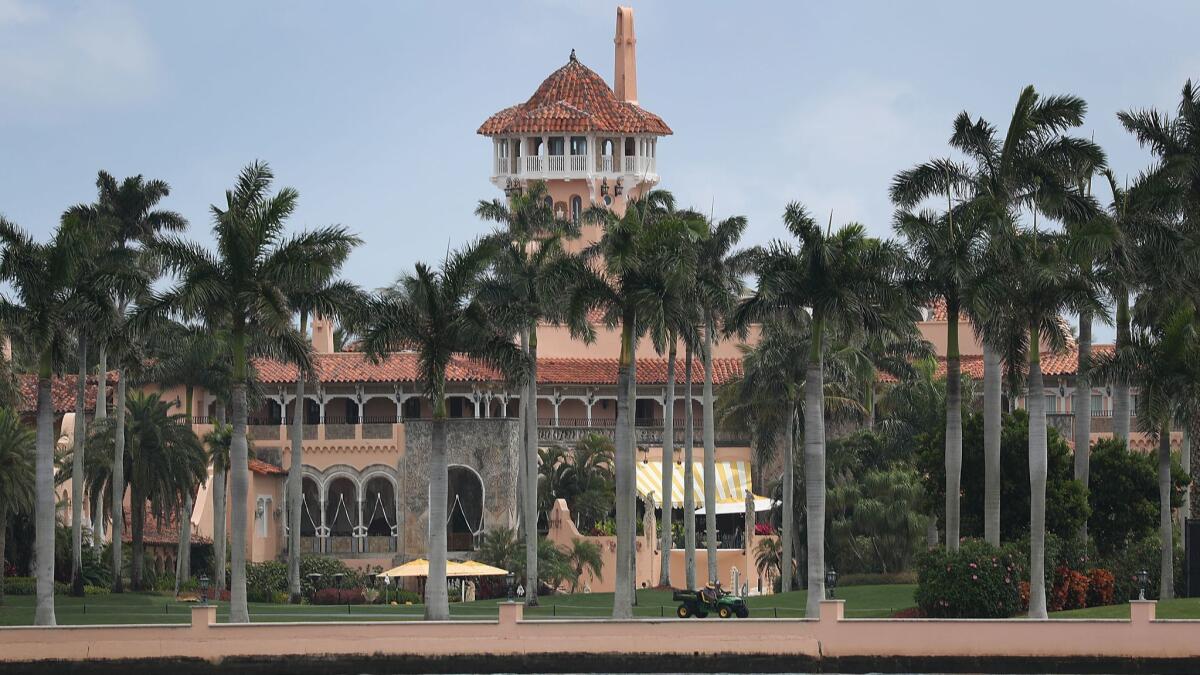U.S. to add 30,000 seasonal worker visas as soon as this week

- Share via
The Trump administration plans to let an additional 30,000 people return to the United States through September for seasonal work, a move that reflects how the booming economy has complicated President Trump’s hard-line efforts on immigration.
Details of the plan were in a draft rule obtained by the Associated Press. It would benefit oyster shucking companies, fisheries, loggers and seasonal hotels, including Trump’s own Mar-a-Lago club in Florida. All use the visas to hire migrants for temporary work they say Americans won’t do.
The visas, known as H-2Bs, will go only to returning foreign workers who have had the visa before, over the last three budget years. Many go back to the same employers year after year. Those workers have had background checks, are trusted and are not likely to stay past their visas, officials said.
U.S. Citizenship and Immigration Services will begin taking applications from employers on behalf of the workers once the temporary rule is published in the Federal Register. That is expected Wednesday.
The strong U.S. economy has made it increasingly difficult for employers to find laborers. The number of seasonal visas has been capped at 66,000 per budget year. Some businesses and lawmakers say that limit is severely outdated, especially when the unemployment rate is the lowest it’s been in 49 years.
Employers say they desperately need more labor, pitting businesses against people inside and outside the White House who say the visas take away American jobs. Trump has benefited from both seasonal workers and from people working in the country illegally at his golf clubs.
Within the White House, advisor Stephen Miller and others want to restrict immigration, including reducing visas for high-skilled workers and suspending or limiting entry to the United States for individuals from countries with high rates of short-term visa overstays.
Trump’s son-in-law Jared Kushner has been working on his own overhaul for months, aiming for immigration and border security changes that Republicans can rally around as the 2020 presidential election nears.
Trump had once railed against the flow of foreign workers and argued, despite conflicting evidence, that foreign workers hurt American workers by competing for jobs and driving down wages. But Trump now says he favors more legal immigration because of economic gains on his watch.
Trump said in his State of the Union speech this year that he wanted people “to come into our country in the largest numbers ever, but they have to come in legally.”
A spokeswoman for the Center for Immigration Studies, a think tank that supports restricting immigration, tweeted that Trump, with the temporary visa worker plan, was selling out to cheap foreign labor.
The National Thoroughbred Racing Assn. of Lexington, Ky., which represents scores of racetrack operators, owners, breeders and trainers, said many trainers “will no doubt qualify for these visas because of the labor shortage that is now the norm on racetrack backstretches,” according to the group’s president, Alex Waldrop.
The debate has played out in Congress too. Two bipartisan groups sent letters to the Homeland Security Department: one urged an increase in the number of temporary visas and the other expressed concern over a possible increase.
Officials from the departments of Homeland Security and Labor said the decision to allocate the visas was based in part on how some businesses could face irreparable harm if they can’t employ the workers. The departments have jointly decided to raise the cap during the last two budget years, but the increase was only 15,000 in those years.
The acting Homeland Security secretary, Kevin McAleenan, said the additional visas were a temporary fix.
He said his department wants lawmakers “to pursue a long-term legislative fix that both meets employers’ temporary needs while fulfilling” Trump’s executive orders to “buy American” and “hire American.”
According to the most recent government data on visa approvals, half of the temporary visas went to horticultural and agricultural workers. Food service, forestry and logging work and fisheries, hunters and trappers made up the bulk of the rest of the 2017 visas.
Sens. Thom Tillis (R-N.C.) and Angus King (I-Maine), along with Reps. Andy Harris (R-Md.) and Chellie Pingree (D-Maine) and a bipartisan group of about 25 other lawmakers sent a letter to Homeland Security this year saying they were working on a solution for the visa cap, but until then the increase was badly needed.
But a separate bipartisan group of senators, including Dick Durbin (D-Ill.) and Chuck Grassley (R-Iowa), wrote last month that they were concerned the visas enabled worker exploitation and fostered human trafficking and debt bondage because of the fees associated with the visas. Combined travel and visa costs can run into the thousands of dollars.
“Americans working alongside H-2B visa holders can find it difficult to compel employers to abide by federal and state labor and employment laws,” the senators wrote.
More to Read
Inside the business of entertainment
The Wide Shot brings you news, analysis and insights on everything from streaming wars to production — and what it all means for the future.
You may occasionally receive promotional content from the Los Angeles Times.










